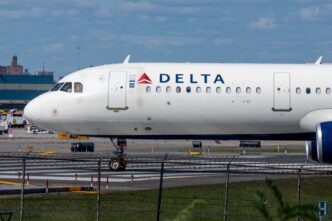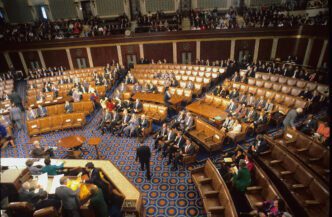Executive Summary
- The Trump administration announced that the FAA will reduce air traffic by 10% at 40 major U.S. airports starting November 7, 2025, if the government shutdown persists.
- This measure is a proactive step to ensure airspace safety due to increasing air traffic controller staffing shortages, exacerbated by controllers working without pay during the shutdown.
- The “prescriptive” and “surgical” reductions will extend beyond commercial airspace to include restrictions on space launches and small aircraft traffic in certain markets.
The Story So Far
- The Trump administration’s decision to reduce air traffic at 40 major U.S. airports stems from an ongoing government shutdown, which has left essential air traffic controllers working without pay. This financial strain is exacerbating existing staffing shortages, leading to a rise in flight delays and cancellations, and prompting the Federal Aviation Administration to implement these reductions to ensure airspace safety.
Why This Matters
- The Trump administration’s decision to reduce air traffic by 10% at 40 major U.S. airports if the government shutdown continues signals escalating operational challenges for critical federal agencies, particularly due to air traffic controller staffing shortages exacerbated by unpaid work. This proactive safety measure is expected to cause widespread travel disruptions for passengers and significant operational impacts for the aviation industry.
Who Thinks What?
- The Trump administration, through Transportation Secretary Sean Duffy and FAA Administrator Bryan Bedford, announced that reducing air traffic at 40 major U.S. airports by 10% is a necessary, proactive step to ensure airspace safety amidst increasing air traffic controller staffing shortages exacerbated by the government shutdown.
- Air traffic controllers are experiencing significant financial strain from working without pay, leading some to take second jobs or call in sick, which is contributing to the reported staffing shortages at FAA facilities.
- Airlines for America, an industry trade group, is working with the federal government to understand the details of the mandate and will strive to mitigate the impacts on passengers and shippers.
The Trump administration announced Wednesday that the Federal Aviation Administration (FAA) will reduce air traffic at 40 major U.S. airports by 10% starting Friday, November 7, 2025, if the ongoing government shutdown persists. Transportation Secretary Sean Duffy stated the measure is a proactive step to ensure airspace safety amidst increasing air traffic controller staffing shortages, which have led to a rise in flight delays and cancellations nationwide.
Impact of Government Shutdown
The decision comes as air traffic controllers, deemed essential employees, are working without pay and are set to miss their second full paycheck next week. This financial strain has led to reports of controllers taking second jobs or calling in sick in protest, exacerbating existing staffing pressures.
FAA Administrator Bryan Bedford noted that over 400 staffing shortages have been reported at FAA facilities since the shutdown began, a figure more than four times higher than the same period last year. These shortages have directly contributed to an increase in travel disruptions.
Implementation Details
Secretary Duffy emphasized that the service reduction will be “restricted to these 40 high volume traffic markets.” While specific airports were not named, the FAA plans to collaborate with airlines to reduce their schedules.
Administrator Bedford described the upcoming changes as “prescriptive” and “surgical,” extending beyond commercial airspace to include restrictions on space launches and small aircraft traffic in certain markets. The airlines were reportedly notified of the plan just an hour before the public announcement.
Industry Reaction and Official Justification
Airlines for America, an industry trade group, stated they are working with the federal government to understand the mandate’s details and will strive to mitigate impacts on passengers and shippers. Both Secretary Duffy and Administrator Bedford reiterated the necessity of these measures to maintain safety.
Bedford commended controllers for their continued work but acknowledged that “the data is telling us we need to do more” to address the system’s pressures. Duffy added that while controllers are asked to work, he understands their daily obligations are challenged by the lack of pay.
Key Takeaways
The impending flight reductions underscore the escalating operational challenges faced by critical federal agencies during the government shutdown. The move aims to prioritize safety in the nation’s airspace, even as it signals potential widespread disruptions for air travelers and the aviation industry.








